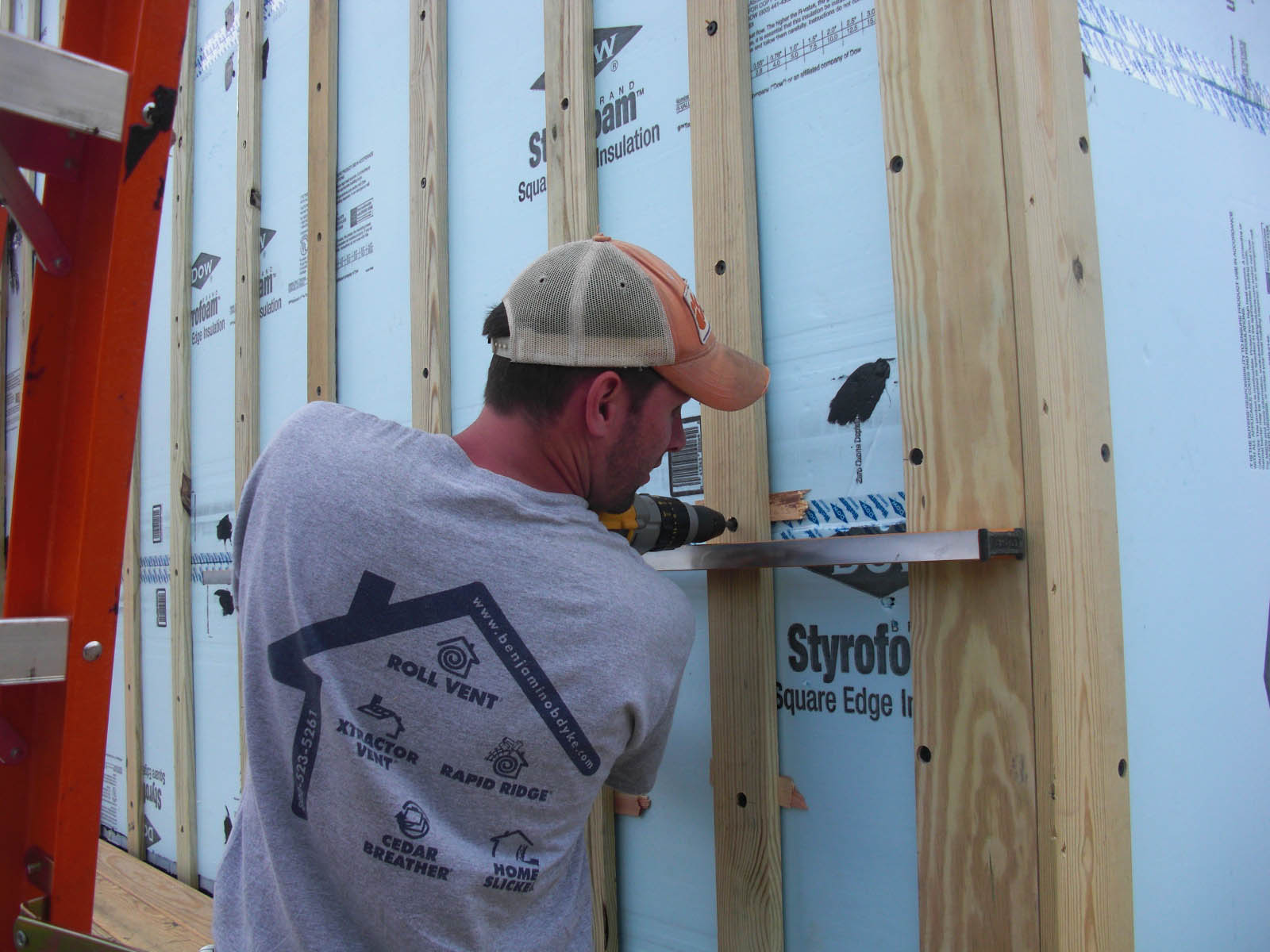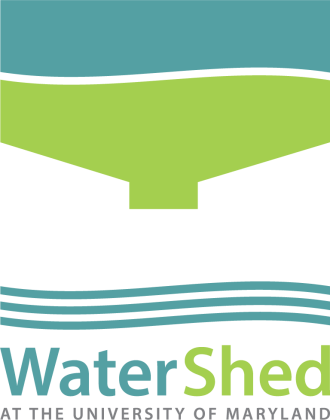
Construction Mentor John Morris Working
Photo Credit: Jeff Gipson
John Morris has a love for building in his blood. As a kid he often worked with his father, who was in construction, helping out on job sites, building homes. He later studied Architecture at Clemson University and got his Master of Architecture degree at Maryland, where he was an instrumental player in the creation of LEAFHouse. His lifelong experience made him a natural fit as construction team leader for the 2007 Decathlon.
So it’s no wonder that, while he works as a successful architect at Perkins Eastman, he was compelled to come back to Maryland as a construction mentor. Over the many months, John has generously shared his knowledge and talent with the team (aside from his extensive experience, he is a skilled carpenter). The students appreciate his dedication to the team and his tool belt, as well as his good-natured construction site humor. Below John talks about learning through doing, and the beautiful results of collaboration.
What has been your favorite aspect of working on WaterShed?
JM: I absolutely love the design/build aspect of the house and working through issues first hand. I grew up working in construction, and then went to architecture school, so WaterShed gives me the ability to incorporate both of those aspects in the real world. It’s also really enjoyable to watch the learning process throughout my various visits to the site.
What do you hope the students take away from working with you on WaterShed?
JM: I really hope the team realizes, although you may not have the experience or knowledge at the beginning, you have to at least give it a shot. It’s the only way to learn, and in turn be able to teach others how to do a similar task. The experiences they have gained on WaterShed will provide invaluable knowledge for them in the future, and I just hope I added to those experiences in some way.
What have you learned from working with the students this year?
JM: Students this year were fairly inexperienced at the beginning of the construction process, but their energy and enthusiasm was remarkable. They were all extremely passionate about the project and about every little detail of the design and construction process. Their energy was really inspiring.
How important are competitions like the Solar Decathlon in respect to the future of architecture, building technology, and construction?
JM: The Solar Decathlon is extremely important to the future of the design/construction industry because of the unique collaborative environment it represents. It brings together students from all disciplines, not just Architecture and Engineering, but English, Marketing, Computer Science, and many more. There are very few opportunities in the “real world” that enable such a joint venture. It is something to be celebrated. The whole process introduces students and the public to processes, technologies, and ways of thinking that many may have never discovered had it not been for the Solar Decathlon.
What do you hope people will take away from WaterShed when they visit it on the Mall in September?
JM: I hope they realize the amount of effort it took for the idea that is “WaterShed” to become what it is today. While the Solar Decathlon is one of the most publicly celebrated exhibits showcasing state-of-the-art technologies and sustainable designs, it is first and foremost a testament to what can be accomplished when you put all of your energy and efforts towards an ideal that you want to become a reality.
